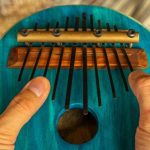 Mysteries
Mysteries  Mysteries
Mysteries  History
History 10 Surprising Stories About the Texas Rangers
 Humans
Humans 10 Philosophers Who Were Driven Mad by Their Own Theories
 Miscellaneous
Miscellaneous 10 Video-Game-Worthy Weapons and Armors from History
 Weird Stuff
Weird Stuff 10 Psychics Who Accurately Predicted Wartime Events
 The Arts
The Arts 10 Pieces of Art Inspired by a Broken Heart
 Health
Health 10 Science Fiction-Sounding New Medical Treatments
 History
History 10 Surprising Facts About the Father of Submarine Warfare
 Space
Space Ten Astonishing New Insights into Alien Worlds
 Weird Stuff
Weird Stuff 10 Bizarre Summer Solstice Rituals Still Practiced Today
 Mysteries
Mysteries Top 10 Haunting Facts About the Ghost Ship MV Alta
 History
History 10 Surprising Stories About the Texas Rangers
 Humans
Humans 10 Philosophers Who Were Driven Mad by Their Own Theories
Who's Behind Listverse?

Jamie Frater
Head Editor
Jamie founded Listverse due to an insatiable desire to share fascinating, obscure, and bizarre facts. He has been a guest speaker on numerous national radio and television stations and is a five time published author.
More About Us Miscellaneous
Miscellaneous 10 Video-Game-Worthy Weapons and Armors from History
 Weird Stuff
Weird Stuff 10 Psychics Who Accurately Predicted Wartime Events
 The Arts
The Arts 10 Pieces of Art Inspired by a Broken Heart
 Health
Health 10 Science Fiction-Sounding New Medical Treatments
 History
History 10 Surprising Facts About the Father of Submarine Warfare
 Space
Space Ten Astonishing New Insights into Alien Worlds
 Weird Stuff
Weird Stuff 10 Bizarre Summer Solstice Rituals Still Practiced Today
10 Musical Instruments Invented in the 21st Century
In the realm of music, the evolution of instruments is a testament to human creativity and our relentless pursuit of artistic expression. The 21st century, a time of rapid technological advancements and cultural shifts, has not disappointed in contributing to this artistic lineage. It has ushered in an array of unique musical instruments, each blending the rich heritage of traditional music with the infinite possibilities offered by modern technology. This intersection has created not just instruments but new ways to experience and produce music, influencing genres and artists alike.
These modern creations are more than just tools for sound; they are the products of visionary minds striving to redefine the boundaries of what is musically possible. From instruments that offer unprecedented digital manipulation of sound to those that revisit and reinvent the very concept of acoustic play, the innovations are as diverse as they are revolutionary. They challenge our conventional views on music-making and open up worlds of sonic exploration that were unimaginable just a few decades ago.
As we delve into the top ten musical instruments that have emerged in the 21st century, we will explore how each has carved out a niche in both the musical landscape and the hearts of musicians and enthusiasts. These instruments not only enhance musical performance but also enrich the musical experience, enabling artists to push the limits of creativity and expression in thrilling new ways.
Related: Top 10 Bizarre Musical Instruments You Rarely See Today
10 Harpejji: Striking a Chord Between Piano and Guitar
The harpejji, invented in 2007 by Tim Meeks, represents a significant leap in stringed instrument innovation. Born from the desire to merge the melodic versatility of a piano with the tactile intimacy of a guitar, this instrument offers musicians the ability to perform chords and melodies simultaneously with remarkable ease. Played by tapping on its strings laid out across a flat surface, the harpejji opens up a rich tapestry of sound that is both familiar and strikingly novel.
What sets the harpejji apart is its intuitive playing style, which can be easily picked up by pianists and guitarists alike. The layout is akin to a keyboard but played vertically, allowing for a playing technique that promotes sustained notes and vibratos that are not easily achieved on traditional keyboards. This results in a sound that is lush and expressive, capable of sustaining musical passages that resonate with emotional depth and clarity.
The instrument has garnered attention from famous musicians, including Jordan Rudess of Dream Theater and Stevie Wonder, who have showcased its potential in various performances. Its ability to blend polyphonic capabilities and dynamic control makes it a standout choice for composers and performers seeking to push the boundaries of their creative expression. The harpejji not only facilitates musical innovation but also enriches the auditory landscape of modern music composition.[1]
9 Glissonic Glissotar: A New Era of Sliding Sounds
The Glissonic glissotar, a relatively unknown but groundbreaking instrument, incorporates elements from both wind and string families to produce a wholly unique auditory experience. This instrument utilizes a glissando effect, commonly associated with sliding between pitches, as its core feature. The fusion of these elements facilitates a continuous and fluid tonal journey that challenges traditional musical segmentations.
This innovative instrument allows players to explore the textural nuances that come with blending sustained wind-like tones with the crisp attack of strings. Its design, which includes electronically modified sound outputs, enables a wide range of expressive capabilities. Musicians can alter timbre, pitch, and even the dynamics of the sound in real time, offering a vast landscape for experimental music and new compositions.
In the hands of skilled musicians, the Glissonic glissotar becomes an extension of artistic intent, enabling performances that could not be achieved with conventional instruments. Its versatility makes it particularly appealing in genres that thrive on continuous sound and experimental ambiances, such as ambient, electronic, and avant-garde music. The Glissonic glissotar is not just an instrument but a new voice in the musical dialogue of the 21st century, promising to influence music creation for years to come.[2]
8 Seaboard: Revolutionizing Keyboard Touch
The Seaboard, unveiled by ROLI in 2013, is a revolutionary reimagining of the traditional piano keyboard. This innovative instrument features a soft, continuous silicone surface that responds to the nuances of touch, allowing musicians to modulate sound in three dimensions: striking, pressing, and gliding across the keys. This multi-dimensional touch capability introduces vibrato, pitch bends, and other dynamic expressions directly at the fingertips, challenging the rigid constraints of black and white keys.
Distinct from any other keyboard instrument, the Seaboard’s interface invites a level of expressive control that rivals that of string instruments, where vibrato and glide are integral to the sound. This tactile interface aligns more closely with the human touch, enabling a direct and emotive connection with music that traditional pianos cannot replicate. The Seaboard bridges the gap between digital synthesis and the organic feel of acoustic instruments, making it a favorite among forward-thinking musicians and composers.
ROLI has integrated groundbreaking technology into the Seaboard that not only redefines how music can be composed but also expands the horizons of what can be performed live. As such, it has found a place in studios and stages, embraced by innovative artists seeking to push the boundaries of performance and sound design. The Seaboard stands as a testament to the ongoing evolution of musical instruments in the digital age.[3]
7 AlphaSphere: Reshaping Electronic Music Creation
The AlphaSphere, launched in 2012, emerges as an avant-garde electronic musical instrument that redefines the interaction between the musician and the digital world. Designed with a spherical array of pressure-sensitive pads, it invites artists to engage with sound through touch, pressure, and spatial awareness. This unique design not only changes the physical approach to composition but also enhances the emotional connectivity between the performer and their electronic creations.
Each pad on the AlphaSphere can be programmed to trigger different sounds, loops, or effects, allowing for a highly personalized musical experience. This adaptability makes it an exceptional tool for electronic music producers and live performers who thrive on building layers of sound in real time. The tactile nature of the AlphaSphere encourages a more intuitive and immersive way to create music, breaking free from the traditional confines of keyboards and mixing desks.
The AlphaSphere has found its niche within the realms of experimental and electronic music, praised for its ability to bring a human touch to electronic music production. It fosters an innovative environment where creativity can flourish, proving that the future of music technology lies in instruments that enhance and expand the sensory experience of music-making. As technology continues to evolve, instruments like the AlphaSphere play a pivotal role in shaping the future soundscape of global music culture.[4]
6 Eigenharp: The Orchestra at Your Fingertips
The Eigenharp, unveiled in 2009, is a marvel of musical technology that integrates various aspects of traditional instruments into a single, sophisticated device. It combines a keyboard layout with a series of sensitive touch strips and a breath controller, offering a dynamic range of expression akin to a full orchestra. The Eigenharp’s ability to seamlessly switch between sounds and instruments makes it a powerful tool for solo performers seeking orchestral depth and variety.
Designed for both live performance and studio settings, the Eigenharp allows musicians to play hundreds of sounds, loop layers, and manipulate effects all in real time. Its versatility appeals to artists across genres, enabling them to explore new sonic territories with unprecedented ease. The instrument’s sensitivity to touch and breath inputs allows for subtle nuances in performance, providing a tactile feedback loop that is rare in electronic instruments.
The Eigenharp not only challenges the traditional boundaries of music performance but also serves as a bridge between electronic and acoustic music realms. Its development reflects a significant shift in musical instrument innovation, focusing on versatility and expressiveness. As musicians continue to discover its potential, the Eigenharp stands out as a significant contribution to the evolution of music creation and performance in the 21st century.[5]
5 Venova: Blurring the Lines Between Brass and Woodwind
The Yamaha Venova, introduced in 2017, is a groundbreaking wind instrument that cleverly blends the simplicity of recorder-like fingerings with the rich, expressive sounds of saxophones. Its compact, durable body and simple reed system make it accessible to both beginners and seasoned musicians. The Venova’s unique, branched pipe structure enhances its tonal qualities, allowing it to produce a smooth, saxophone-like timbre across its range.
Despite its unconventional appearance, the Venova is designed to be easy to play and maintain. Its resistance to weather and impact makes it an ideal choice for travel and outdoor performances. The instrument’s intuitive design promotes quick learning, reducing the learning curve associated with traditional saxophones and making it a favorite among music educators and enthusiasts.
The Venova’s versatility and distinct sound have earned it accolades in the music community, including a prestigious design award. It represents a fusion of traditional craftsmanship and innovative engineering, pointing the way forward for the evolution of wind instruments. The Yamaha Venova is not just an instrument; it’s a testament to the possibilities that open up when cultures and technologies converge in music.[6]
4 Continuum Fingerboard: Unleashing Musical Fluidity
The Continuum Fingerboard, first conceptualized in the late 1990s but gaining prominence in the 21st century, represents a significant innovation in the realm of musical instruments. This electronic device extends the expressive capabilities of a traditional keyboard by offering a seamless, touch-sensitive surface where nuanced vibratos, bends, and slides can be performed with the slightest finger movements. The absence of fixed keys enables musicians to explore microtonal scales and sounds with precision and ease.
The instrument’s design facilitates an extraordinary degree of expression, much like that of string instruments, allowing performers to execute detailed phrasing and articulation that are difficult or impossible on a traditional keyboard. The Continuum Fingerboard is highly regarded among composers and performers who specialize in electronic and experimental music, providing them with a tool that transcends ordinary musical boundaries.
As it integrates with digital audio workstations and synthesizers, the Continuum Fingerboard becomes a powerful hub for both live performances and studio productions. Its ability to mimic the tonal qualities of classical instruments while introducing entirely new sounds makes it a unique addition to the musician’s toolkit. This instrument not only challenges the conventional practices of music production but also inspires new forms of creativity in music composition and performance.[7]
3 GuitarViol: The Hybrid Harmony of Strings
The GuitarViol, emerging in the early 21st century, is a fascinating hybrid that elegantly combines elements of the guitar and the cello. This stringed instrument is bowed like a cello but fretted and played like a guitar, offering a unique sonic blend that appeals to musicians seeking to explore new textures and soundscapes. Its design facilitates a crossover of techniques, enabling guitarists to delve into the resonant qualities of bowed strings while providing cellists an approachable pathway to fretted play.
Crafted to meet the demands of both classical and contemporary musicians, the GuitarViol serves as a bridge between different musical traditions. It allows for a diverse range of expressions, from the melancholic and introspective sounds typical of string quartets to the bold and dynamic strikes found in modern rock compositions. Its versatility makes it particularly popular in film scoring and studio sessions, where its unique timbre can add a distinctive layer to any piece.
The GuitarViol is not just an instrument but a statement of musical innovation, challenging traditional categorizations and inviting artists to rethink the possibilities of stringed performance. As it continues to gain popularity, the GuitarViol stands as a testament to the creative fusion that defines the evolution of musical instruments in the 21st century.[8]
2 Hang Drum: Crafting Ethereal Tones with Steel
The hang drum, developed in 2000 by Swiss inventors Felix Rohner and Sabina Schärer, is a distinctive steel instrument that has captivated the music world with its melodic and ethereal sound. Resembling a flying saucer, this instrument is played with the hands, tapping on the dented surface areas to produce different tones. The sound it emits is deeply resonant and soothing, often used in music therapy, meditation, and ambient music performances.
Its creation was inspired by the steelpan, yet it stands apart due to its softer, more harmonious sound. The hang drum’s unique tuning system allows for a variety of scales and modes, providing musicians with a wide palette of emotional expressions. This versatility makes the hang drum a favorite among percussionists and new-age artists who seek a sound that can transport listeners to a serene, almost otherworldly realm.
The hang drum has also influenced the development of similar instruments, such as the handpan, expanding the family of these melodious steel drums. Its impact on the music scene is a testament to the instrument’s ability to bridge cultural and musical divides, creating a universal language of rhythm and harmony that resonates across diverse audiences.[9]
1 Artiphon Instrument 1: Redefining Musical Versatility
The Artiphon Instrument 1 is an innovative musical device that emerged in the 21st century, reshaping the way musicians interact with digital instruments. Designed to be incredibly versatile, it can be played as a guitar, violin, piano, and drum machine, adapting to the user’s preferred method of expression. This adaptability is achieved through its touch-sensitive fretboard and strummable surface, which can be programmed to mimic various instrument sounds and playing styles.
With its ability to interface seamlessly with music production software, the Artiphon Instrument 1 is highly appreciated by both amateur and professional musicians. Its intuitive design makes it easy for beginners to start making music immediately, while its depth allows seasoned artists to explore complex arrangements and compositions. This instrument not only broadens the musical possibilities for individual creators but also encourages experimentation with different musical genres and techniques.
The Artiphon Instrument 1’s impact on the music industry highlights its role in the digital transformation of music creation. It democratizes music production, making high-quality sound creation accessible to a broader audience and fostering a new wave of musical innovation and creativity. As such, it stands as a testament to the ongoing evolution in musical instrument design, blending traditional sensibilities with cutting-edge technology.[10]








